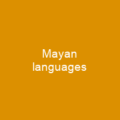The Maya civilization developed in an area that encompasses southeastern Mexico, all of Guatemala and Belize, and the western portions of Honduras and El Salvador. The Maya developed a highly complex series of interlocking ritual calendars, employed mathematics, and employed one of the earliest instances of the explicit zero in the world. The Mayans recorded their history and ritual in screenfold books, of which only three examples remain.
About Maya civilization in brief

In the 16th century, the Spanish Empire colonised the MesOamerican region, and a lengthy series of campaigns saw the fall of Nojpetén, the last Maya city, in 1697. The Maya were literate and developed a complex system of hieroglyphic writing that was the most sophisticated and highly developed writing system in pre-Columbian Americas. They also created art using both perishable and non-perishable materials, including wood, jade, obsidian, ceramic, sculpted stone monuments, stuccos, and finely painted murals. The first Maya cities developed around 750 BC, and by 500 BC these cities possessed monumental architecture, including large temples with elaborate stucca façades. Maya politics was dominated by a closed system of patronage, although the exact political make-up of a kingdom varied from city-state to city- state. In the Maya Lowlands two great rivals, the cities of Tikal and Calakmul, became powerful. By the Late Classic, the aristocracy had greatly increased, resulting in the corresponding reduction in the exclusive power of the divine king. There was a widespread political collapse in the central Maya region, resulting in internecine warfare, the abandonment of cities, and a northward shift of population. This period saw the Maya civilization develop many city-states linked by a complex trade network.
You want to know more about Maya civilization?
This page is based on the article Maya civilization published in Wikipedia (as of Dec. 03, 2020) and was automatically summarized using artificial intelligence.







